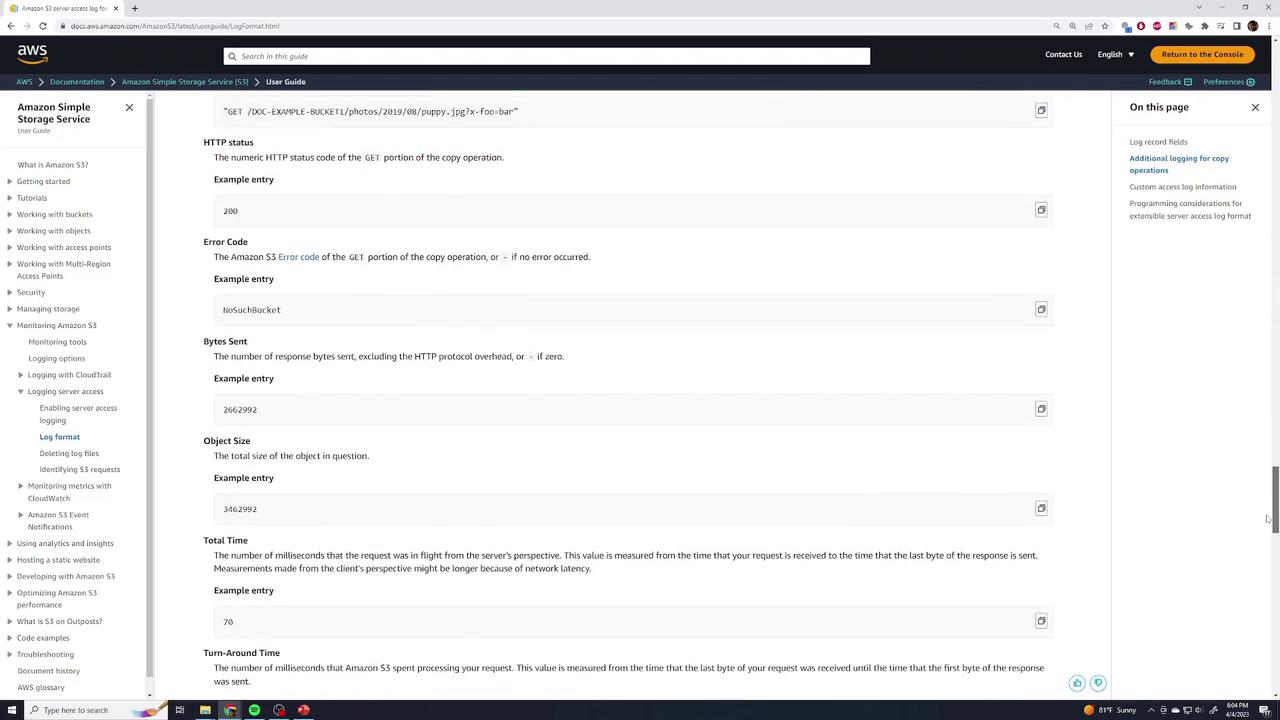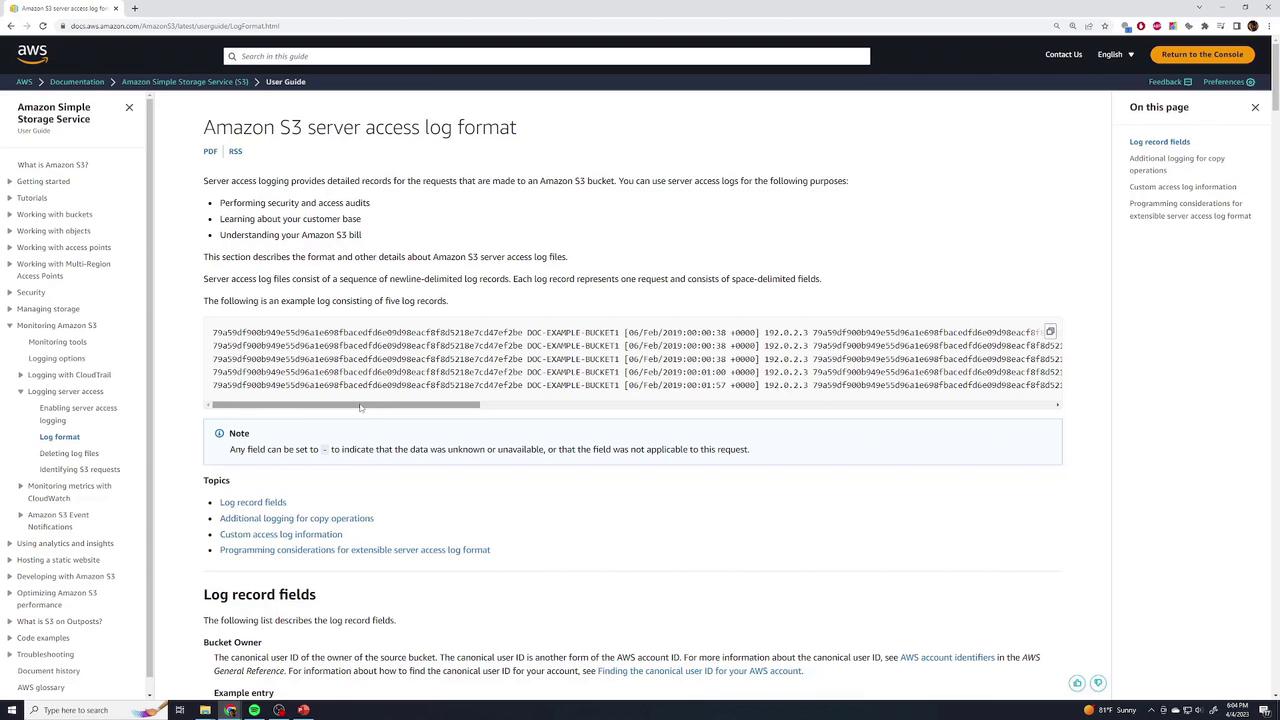Amazon Simple Storage Service (Amazon S3)
AWS S3 Management
S3 Access Logs
Amazon S3 server access logging captures detailed records for every request to a bucket, enabling you to audit access, debug issues, and optimize storage. Each operation—such as a GET on file1.txt—generates a log entry that records who accessed the object, when the request occurred, and which API call was performed:
John [06/Feb/2019:00:00:38 +0000] GET /file1.txt
Why Enable Access Logs?
Enabling server access logging provides several advantages:
| Benefit | Description |
|---|---|
| Security & Auditing | Track who accessed objects and when, supporting compliance requirements. |
| Usage Patterns | Analyze request frequency to select the most cost-effective storage class. |
| Centralized Log Storage | Collect logs in a dedicated bucket for easy management and analysis. |
Warning
Storing and analyzing access logs may incur additional storage and request charges. Review your AWS billing dashboard to estimate costs.
What Information Is Logged?
Each log record consists of numerous fields, including:
| Field | Description |
|---|---|
| Bucket owner | AWS account ID of the bucket owner |
| Bucket name | Name of the S3 bucket |
| Timestamp | Date and time of the request (in UTC) |
| Requester IP & ID | Client IP address and AWS user identifier (or - if anonymous) |
| Request ID | Unique ID assigned by S3 for the request |
| Operation | API action (e.g., REST.GET.OBJECT, REST.PUT.OBJECT) |
| Object key & Version | Requested object path and version ID |
| HTTP status & Error | HTTP response code and any error codes |
| Bytes sent & Received | Payload sizes in bytes and response timing |
| User agent | Client application or browser details |
For the complete list of log fields, see Monitoring Amazon S3 > Log Format in the AWS documentation:

Sample Log Entry
A typical S3 access log record begins with the bucket owner and bucket name, followed by the timestamp and requester details:
1e69f8cfa4d16e09c88f48d218e7c47fe2be DOC-EXAMPLE-BUCKET1 [06/Feb/2019:00:00:38 +0000] 192.0.2.3 79d59f4b900b49e95d5e1a69f8f8c49c8e9e09b0c8af8d218e7c47fe2be 3571 0 0
Subsequent fields describe the operation, request line, status, bytes, and user agent:
b0a88ac8fa921b2c7dfe 3E74277EXAMPLE REST.GET.VERSIONING "GET /DOC-EXAMPLE-BUCKET17/versioning HTTP/1.1" 200 113 "-" "$3Console/0.4" s9i2nYFfP76zVrKcP9<5
b0a88ac8fa921b2c7dfe 89C12E74EXAMPLE REST.GET.LOGGING_STATUS "GET /DOC-EXAMPLE-BUCKET17/logging HTTP/1.1" 200 242 11 "-" "$3Console/0.4" -9xkBeVhWfNxiM2bLxmOk0xq
b0a88ac8fa921b2c7dfe A2401f406E12 REST.GET.BUCKETPOLICY "GET /DOC-EXAMPLE-BUCKET17/policy HTTP/1.1" 404 NoSuchBucketPolicy 29 "-" "$3Console/0.4" -bMBSx0xqo
b0a88ac8fa921b2c7dfe REST.PUT.OBJECT s3-dg.pdf "PUT /DOC-EXAMPLE-BUCKET17/s3-dg.pdf HTTP/1.1" 200 - 28 "-" "$3Console/0.4" 160621Z1v8K1v8
All generated log files are delivered as plain text to your designated logging bucket:

Links and References
- Monitoring Amazon S3 server access logging
- Analyzing S3 access logs with Amazon Athena
- AWS S3 CLI Reference
Watch Video
Watch video content